#natures heating
Photo
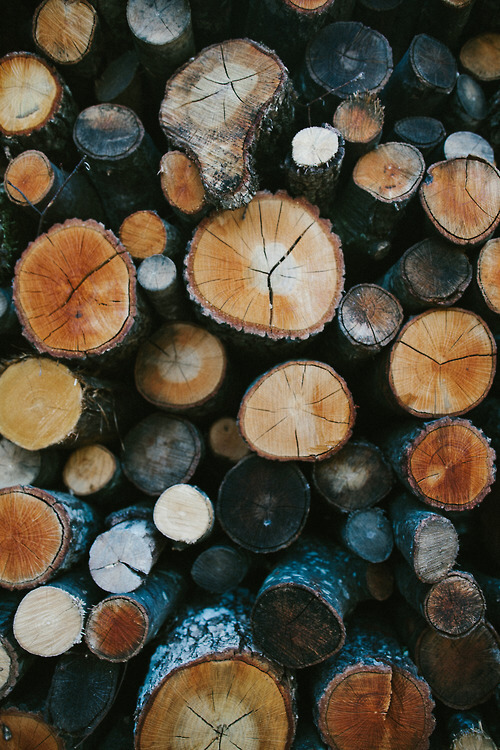
#wood#cabin#wood cabin#natural heating#free heating#free heat#free#natures heating#nature#natural fire#fire#fireplace#fire stove#fire aesthetic#autumn#winter#winter aesthetic#autumn aesthetic#cabin fire#cabin aesthetic#cabin core#forest#forestcore#wood aesthetic
54 notes
·
View notes
Text
Ancient redwoods recover from fire by sprouting 1000-year-old buds
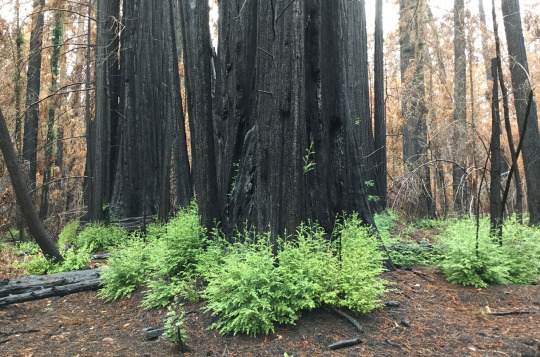
Article | Paywall free
When lightning ignited fires around California’s Big Basin Redwoods State Park north of Santa Cruz in August 2020, the blaze spread quickly. Redwoods naturally resist burning, but this time flames shot through the canopies of 100-meter-tall trees, incinerating the needles. “It was shocking,” says Drew Peltier, a tree ecophysiologist at Northern Arizona University. “It really seemed like most of the trees were going to die.”
Yet many of them lived. In a paper published yesterday in Nature Plants, Peltier and his colleagues help explain why: The charred survivors, despite being defoliated [aka losing all their needles], mobilized long-held energy reserves—sugars that had been made from sunlight decades earlier—and poured them into buds that had been lying dormant under the bark for centuries.
“This is one of those papers that challenges our previous knowledge on tree growth,” says Adrian Rocha, an ecosystem ecologist at the University of Notre Dame. “It is amazing to learn that carbon taken up decades ago can be used to sustain its growth into the future.” The findings suggest redwoods have the tools to cope with catastrophic fires driven by climate change, Rocha says. Still, it’s unclear whether the trees could withstand the regular infernos that might occur under a warmer climate regime.
Mild fires strike coastal redwood forests about every decade. The giant trees resist burning thanks to the bark, up to about 30 centimeters thick at the base, which contains tannic acids that retard flames. Their branches and needles are normally beyond the reach of flames that consume vegetation on the ground. But the fire in 2020 was so intense that even the uppermost branches of many trees burned and their ability to photosynthesize went up in smoke along with their pine needles.
Trees photosynthesize to create sugars and other carbohydrates, which provide the energy they need to grow and repair tissue. Trees do store some of this energy, which they can call on during a drought or after a fire. Still, scientists weren’t sure these reserves would prove enough for the burned trees of Big Basin.
Visiting the forest a few months after the fire, Peltier and his colleagues found fresh growth emerging from blackened trunks. They knew that shorter lived trees can store sugars for several years. Because redwoods can live for more than 2000 years, the researchers wondered whether the trees were drawing on much older energy reserves to grow the sprouts.
Average age is only part of the story. The mix of carbohydrates also contained some carbon that was much older. The way trees store their sugar is like refueling a car, Peltier says. Most of the gasoline was added recently, but the tank never runs completely dry and so a few molecules from the very first fill-up remain. Based on the age and mass of the trees and their normal rate of photosynthesis, Peltier calculated that the redwoods were calling on carbohydrates photosynthesized nearly 6 decades ago—several hundred kilograms’ worth—to help the sprouts grow. “They allow these trees to be really fire-resilient because they have this big pool of old reserves to draw on,” Peltier says.
It's not just the energy reserves that are old. The sprouts were emerging from buds that began forming centuries ago. Redwoods and other tree species create budlike tissue that remains under the bark. Scientists can trace the paths of these buds, like a worm burrowing outward. In samples taken from a large redwood that had fallen after the fire, Peltier and colleagues found that many of the buds, some of which had sprouted, extended back as much as 1000 years. “That was really surprising for me,” Peltier says. “As far as I know, these are the oldest ones that have been documented.”
... “The fact that the reserves used are so old indicates that they took a long time to build up,” says Susan Trumbore, a radiocarbon expert at the Max Planck Institute for Biogeochemistry. “Redwoods are majestic organisms. One cannot help rooting for those resprouts to keep them alive in decades to come.”
-via Science, December 1, 2023
#redwoods#california#wildfire#climate change#extreme heat#natural disasters#botany#plant biology#photosynthesis#santa cruz#hopepunk#sustainability#climate hope#united states#good news#hope
12K notes
·
View notes
Text
tag where you're from if you want
#tw natural disaster#tumblr research#i think technically heat waves are natural disasters too and a lot of people have experienced those. unfortunately.#i've had to evacuate from some of these..#orygynall poast#polls
16K notes
·
View notes
Text





the ferb and perry friendship hour brought to you by the color blue. postscript

#ferb as a naturalized(with a z) american makes his morning tea in a bucees mug heated in the microwave not a kettle in sight#theres no point/punchline i just enjoy drawing these two. i hope the coziness of the scene comes through#i like ferb#draws#btw this is set a few years ahead but pre-aya times not that im married to the aya timeline lol
833 notes
·
View notes
Text
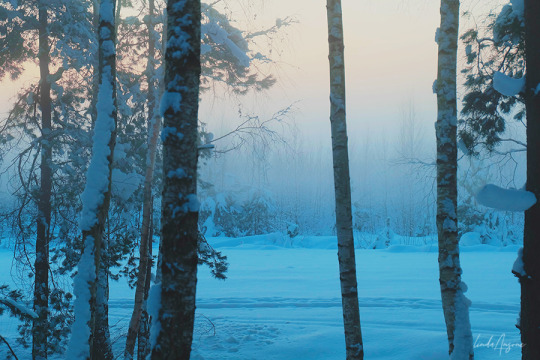
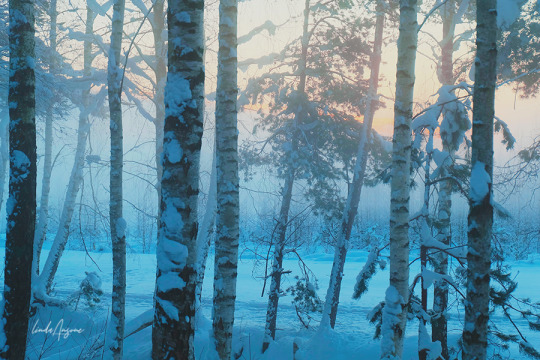
#winter#fog#mist#wintercore#winter aesthetic#winter photography#woods#latvia#scenic#scenery#nature#nature photography#snow#original photographers#photographers on tumblr#not a fan of the heat tbh so here's something to cool down
921 notes
·
View notes
Text
Prompt 200
Danny has found himself reincarnated, for fun! While waiting for Tucker to reincarnate. He’s uh, found himself as a clone now- thankfully stable! But he was apparently also an accident, and overheard some of the people talking about termination, which no thanks?
So apparently he wasn’t exactly an accident per se, they did mean to make a clone, so thank fuck for that! They had apparently grabbed the wrong blood, which he almost snorts at. Kind of hard to do in a tube full of liquid though.
Oh well, he’ll just be leaving now… after he destroys this lab and steals all these files on himself, thank you~ Now, does he want to go on an adventure or find his unwilling donors first…
#Dcxdp#Dpxdc#Prompts#Danny is a Superbat clone#They meant to grab Wonder Woman’s blood but clay doesn’t bleed so#Why yes the league & Co do in fact learn about this lab and arrive about an hour after Danny escapes#He’s already gone by the time they get there but there are a few spare files#Danny is just vibing and testing what powers he has and doesn’t#He’ll miss his intangibility but it’s not like he used it that often during battle#Ooh he’s kept his sharp canines that’s cool#Wow according to his files he’s half alien that’s so cool#He’s sittin on some random mountain while discovering his natural ventriloquism ability & having fun mimicking birds#And is nearly discovered when he discovers the heat vision and burns through part of said mountain#When he IS eventually found the heroes just see this five year old floating above some grass#and trying to Carefully catch some fireflies#Danny is trying to not crush them but it looks a lot like a kid discovering the world for the first time#Fuck it#Superbat
2K notes
·
View notes
Text
#good news#nature#science#environmentalism#environment#animals#climate change#fossil fuels#heat pumps
2K notes
·
View notes
Text
king merlin after meeting lady guinevere and sir lancelot’s baby and falling in love: arthur. i want a baby.
king arthur, not looking up from his paperwork: …what?
merlin: give me a baby.
arthur, sighing: merlin, you studied to be a physician. i don’t think i have to be the one to tell you how impractical that is.
merlin, rolling his eyes: this is why i’m the brighter side of the coin
arthur, finally looking up: wha-
queen merlin using magic to transform her body: i. want. a. baby.
arthur:
arthur:
arthur: *stands up from his desk so fast his chair topples over, multiple parchments flutter to the ground, his tunic is already off*
#genderfluid merlin#the real genderfluid experience is answering ‘shapeshifting’ to that ‘which power would you pick’ question#every. time.#merlin is lucky enough to have magic to accomplish this#i am Envious#merthur#i am a firm believer in top!merlin#but i am also a believer in emrys being the incarnate of nature and longing to make life#all the people hes killed#all the death hes caused#he wants to balance it out with children#obviously thats not the only reason but yk#all of their kids have birthdays in the winter bc merlin really really REALLY wants a baby in spring#for SOME reason 👀#(psst its bc hes connected to nature and has a (i dont want to say heat but) heat)#(and bc dragonlords are like part dragon so that animalistic quality to him absolutely does not help with the heat allegations)#queen merlin#king merlin#merlin emrys#king arthur#arthur pendragon#incorrect quotes#bbc merlin#incorrect merlin quotes#headcanon#head canon#hc#fic#fanfic#fanfiction
813 notes
·
View notes
Text

Bas van den Hout - Heatwaves, 2024
182 x 94 x 17 cm
347 notes
·
View notes
Text
will holding mike's face when they kiss and mike holding will's neck when they kiss. that is all
#something something mike getting called frog face and being insecure about his looks and something something will loving him BECAUSE of that#<- like. how he looks#and so when they kiss his fingers naturally drift to mike's face to run over his defined jaw and his cheeks and in his messy curly hair#because will loves & adores those parts of him so much & he finally gets to cherish them as his.#and mike like. tears up about it or whatever. and something something mike subconciously feeling like he needs to protect will from#-everything so he places his hands - his big giant hands that he has also probably been insecure about - over will's neck to cover it#-completely because he wants to stamp out that feeling that darkness lurks around every corner in will's neck#he just wants will to feel safe and warm in his arms and the heat of mike's hands practically dissolves the chill down will's neck#or whatever. if you even care. and they make out sloppy also#stranger things#byler#mike wheeler#will byers#st.txt
577 notes
·
View notes
Text

Memories of Autumn:
My favorite persimmon tree.
Memories necessary to escape the artificially intensified heat of summer, a result of living in a manmade island of concrete and asphalt and to ave something to look forward too.
One could say that autumn in Tokyo begins in November when leaves start changing colors. This may seem a month or two late, but one has to remember that Tokyo is southern area at about the same latitude as Winston-Salem, North Carolina or Athens, Greece. And, believe it or not, Las Vegas. (Tokyo is between 35-36 latitude north. Tokyo is not a city, it is a prefecture.)
Small Town Tokyo: Himonya
#tokyo#japan#photography#original photographers#photographers on tumblr#small town tokyo#persimmon trees#autumn#f**k summer#tokyo life#color photography#nature in tokyo#urban nature#urban photography#urban landscape#the only country where many believe is the only country with 4 seasons#the only country with four seasons#japanese myths#日本人論#synthetic city#concrete and asphalt#heat island effect#東京#日本#himonya#meguro
139 notes
·
View notes
Text
Welp, as I was googling some images for Yasammy week, I came across a thread and turns out one of my favorite Jurassic YouTubers is homophobic and a Yasammy hater…
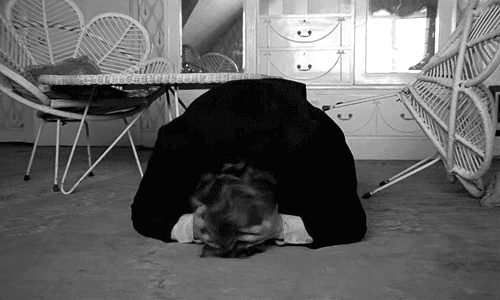
(More ranting in the tags)
#Guess I’m not watching his content anymore#I literally don’t care that he’s a Christian just stop spreading misinformation#I guess he would hate me for liking girls now#I’m so tired#and just a bit pissed off ngl#homophobia tw#Stop saying Yasammy was forced#They’re one of the most natural ships I’ve seen in media#Once again they wouldn’t care if one was a boy#I’m not even gonna watch the entire video on it#But I scrolled through the comments and… yeah…#Not what I wanted to see after my work shift#Jwcc#jwct#rant#yasammy#I’m going to pour my heart and soul into Yasammy week#I’m feeling spiteful rn#jurassic world camp cretaceous#not gonna send any hate his way but I just needed a place to vent#Klayton Fioriti#I no longer recommend his content…#Common L homophobe#Legit give me a reason as to why Yasammy is poorly written other than “they’re both girls#think of the kids watching this”#☝️🤓#No one is turning your kids gay Karen#Cry about it#womp womp#im so freakin heated rn
106 notes
·
View notes
Note
I was wondering if u wouldn't mind me asking more lore for the nun au :3. So, for demon Ragatha, can everyone see her, or just Pomni? If other people can see her, does she appear like a demon, or a normal human (like a disguise)? Also, does Ragatha give off any vibes? Like if u walk past her, would u get a tingle up your spine, hairs on the back of your neck standing up, stuff like that
i never mind !!! i get very happy when people want to know mlre aboit this au !! other pwople can see her yes and they see her as a demon and she COULD have a human disguise bit she chooses not to becayse she dowsnr lime usong her powera (also she doesnr care if people see her becqhse no one believes shes actually the devil) and YES SHE DOES GIVE LFF LIME A VIVE WHEN SHES CLOSE !! she actually mames the spaxe ahes in feel hotter and makes the people feel hotter (like literally as if rhey are burning up woth a fever)

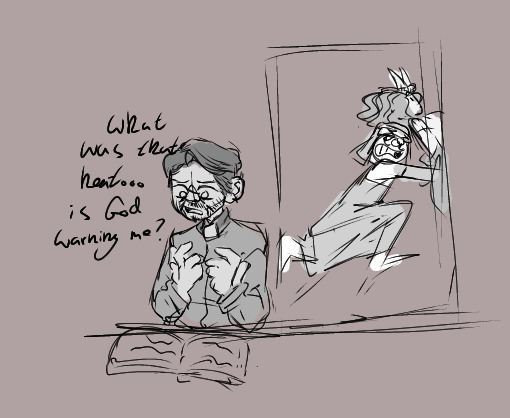
this is great for pomni when its winter nwcause ragatha is literally a radiator and heats her uo nidely but in summer poor pomni has to dwal with ragatha (bwkng her clingy self) cuddling with pomni and heating her up so much
#demon x nun au#demon ragatha#nun pomni#i want to draw the events of limr winter and summer lime the differences#ragatba does actually feel warm like to her its just her natural temperature she can withstabd like a lot of heat#thats human caine by the way hes line wjatever the fucm i said he was last tine#poor pomni is trying so hard to make sure nk one sees ragatha#and ragatba like just wlaks around full on bkg ass demon she is and forgets that shes supoosdto not be seen
164 notes
·
View notes
Text


#winter#winter photography#scenic#scenery#sunlight#snow#original photographers#photographers on tumblr#woods#latvia#nature#nature photography#something cool in this heat
735 notes
·
View notes
Text




Special herbs color explorations.
#illustracion#illustration#art#digital art#digital illustration#artists on tumblr#plants#heat#flowers#art print#nature#uchuva#holly#ruda#scientific illustration#herbs#plants and herbs#medicinal herbs
157 notes
·
View notes
Text
AYESHA RASCOE, HOST:
With Spain and Portugal saying that hundreds of people have died from the heat waves sweeping through Europe this month, the longer-term view might come as a surprise. Over the past 50 years, the number of deaths attributed to weather-related disasters has actually fallen. Yes, you heard that right. The World Meteorological Organization says that the number of disasters has increased five times over the past 50 years, but the number of fatalities has fallen by two-thirds. Vox climate writer Umair Irfan has delved into this paradox and joins us now. Welcome to the program, Umair.
UMAIR IRFAN: Thanks for having me, Ayesha.
RASCOE: So how can this be? Like, how can the number of deaths be falling even though we hear the news, we see the disasters? You know, seas are rising, summers are hotter, hurricanes seem to be getting stronger. So how is it possible that deaths can be down?
IRFAN: Well, there are two main factors here. One is better forecasting - basically being able to get ahead of these disasters and then hopefully being able to get people out of harm's way. So that's really prominent with things like hurricanes and heat waves. We can actually see those things days in advance. The other side of the equation is how well we can cope with things like storms, fires and heat waves when they do occur. So we have better tools - things like sea walls. We have better building codes. We have firefighting teams that can get people out of fire zones. And so between those two aspects - you know, the better forecasting and the better tools - we've been able to avert a lot of deaths, even though the global population has grown about fourfold since the start of the 20th century.
RASCOE: Are the technological advances that you're talking about available even in less-developed areas?
IRFAN: It's not, unfortunately. And you're hitting on a very important point. You know, the WMO pointed out that about 90% of disaster-related fatalities that occur today are occurring in developing countries. And there's a huge gap in terms of being able to anticipate these disasters before they occur and being able to respond to them and being able to rebuild in their aftermath. And that really is a big shortfall that a lot of world leaders are starting to get concerned about...
You know, the World Meteorological Organization, they launched this initiative to basically say that they want the whole world covered by disaster early warning systems over the next five years. And they think that this is something that's going to be taking a big bite out of the fatalities and the casualties caused by these disasters. So I think it's worth highlighting the progress that's made, but also the progress that we still need to make.
-via NPR, July 17, 2022
Thanks so much to @gardening-tea-lesbian for the link!
#weather#extreme weather#extreme heat#natural disasters#climate anxiety#climate crisis#climate change#flood warning#disaster response#disaster relief#disaster risk reduction#hurricanes#tsunami#earthquake#wildfire#tornado#good news#hope#hope posting#climate optimism
433 notes
·
View notes